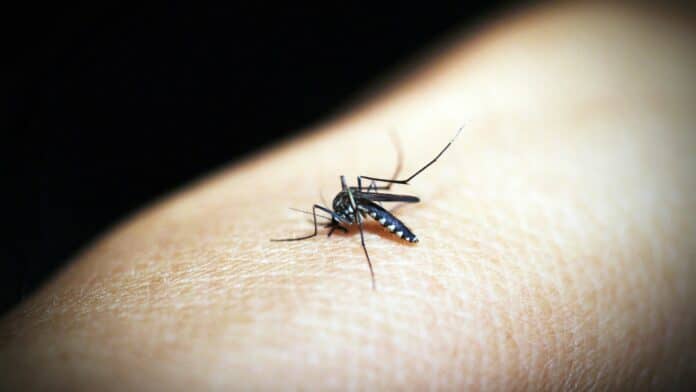Over the past ten years, high-throughput 16S rRNA gene sequencing studies have shown that mosquitoes harbor diverse bacterial communities in their digestive system. However, previous research has yet to examine the total bacteria community inside versus outside of mosquitoes and whether bacteria found on the outside could represent a potential health threat through mechanical transfer.
Scientists from North Carolina State University examined the bacterial community of the external surface and internal body of female mosquitoes found in homes in Africa’s Cote d’Ivoire – the Ivory Coast.
R. Michael Roe, William Neal Reynolds Distinguished Professor of Entomology at NC State and co-corresponding author of the study, said, “When you’re exposed to mosquitoes, you worry about blood feeding. We hypothesize mosquitoes can physically transfer bacteria by landing on you or defecating on household surfaces like flies do.”
“They may not, but no one has studied it before.”
From residences in a Cote d’Ivoire area that produces rice, scientists at the Centre Suisse de Recherches Scientifiques collected 79 adult female Anopheles coluzzii mosquitoes. The microbiome of the mosquitoes’ inside and external body surfaces was examined at NC State.
The findings surprised scientists.
Loganathan Ponnusamy, an NC State principal research scholar in entomology and co-corresponding author of the paper, said, “We found greater bacterial diversity internally than externally, which didn’t match what has been found with blow flies, for example.”
“At the same time, we found lots of external bacterial differences between homes but not much difference internally between homes, which makes sense. Much of what is found internally relate to nectar or honey consumed as mosquitoes forage outdoors.”
The researchers also discovered fructobacillus, often present in nectar sources like flowers and beehives, for the first time in the academic literature, suggesting mosquitoes visited those plants or nectar sources.
Roe said, “This is another risk. Mosquitoes carry bacteria externally and internally and come into your home, possibly transferring pathogenic bacteria.”
Scientists are further planning to continue their work by mosquitoes to a bacteria that would never be found on human skin and see whether the bacteria transfer to an artificial membrane. They then could perform the same test on human arms.
Journal Reference:
- Kaiying Chen, Loganathan Ponnusamy, et al. Internal and external microbiota of home-caught Anopheles coluzzii (Diptera: Culicidae) from Côte d’Ivoire, Africa: Mosquitoes are filthy. PLoS ONE. DOI: 10.1371/journal.pone.0278912
